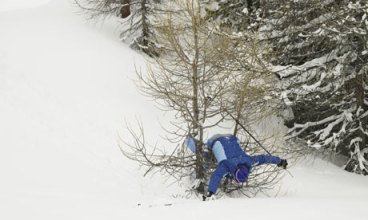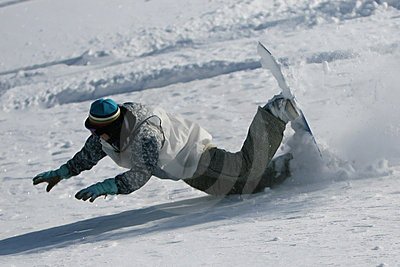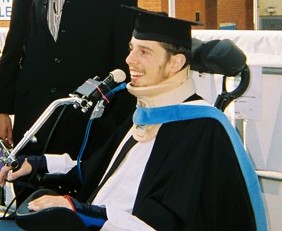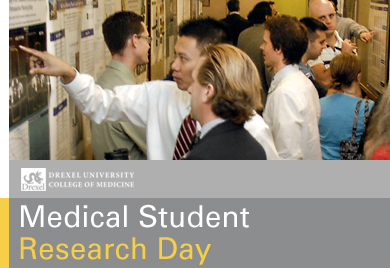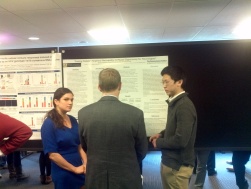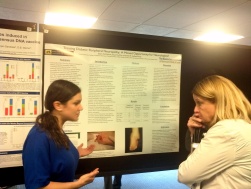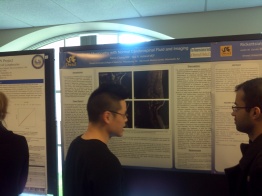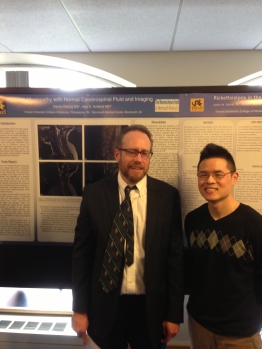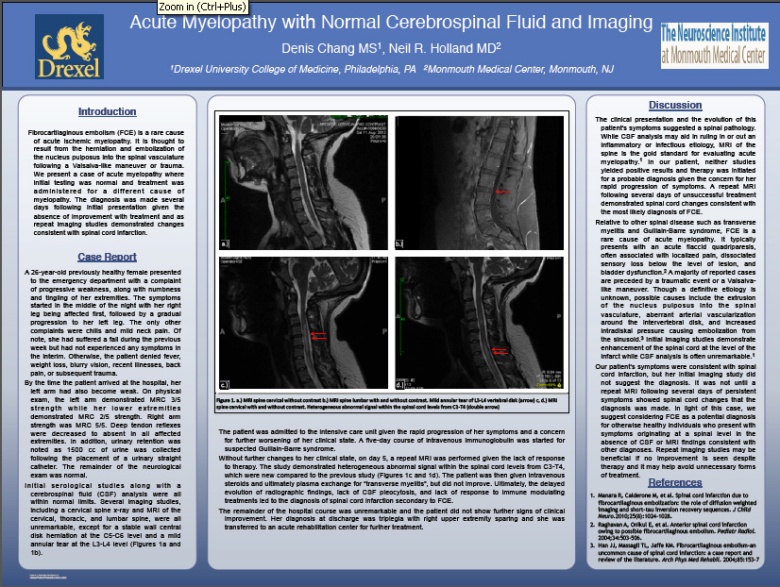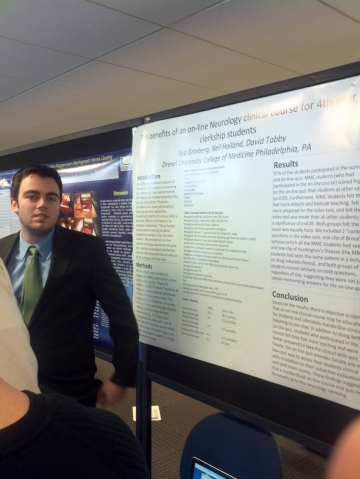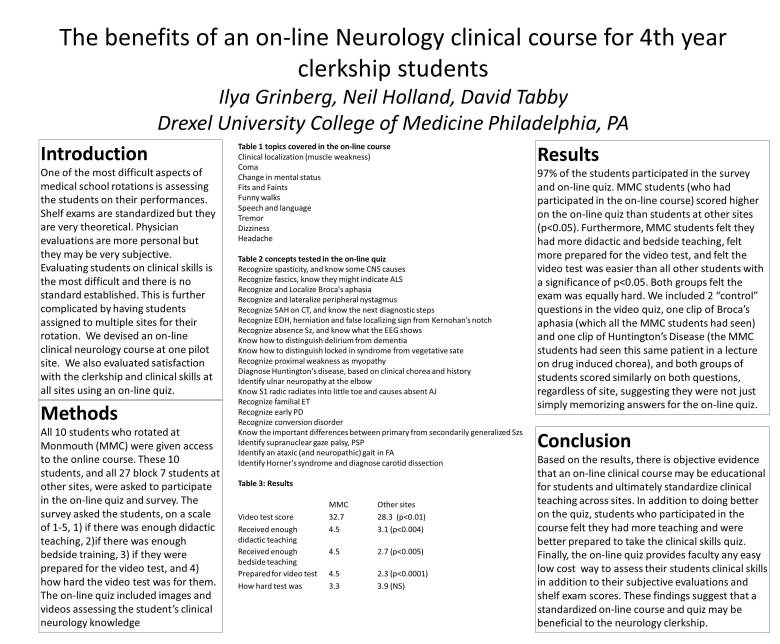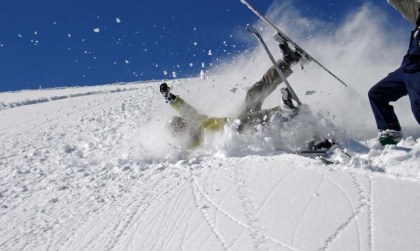
- We’re mostly talking about orthopedic, spinal cord and head injuries.
xx
Spinal Cord Injuries:
The incidence of spinal cord injury (SCI) is around 1 per 100,000 visits (mostly thoracolumbar spine), usually caused caused by a simple fall, followed by hitting a tree.
The incidence of SCI for snow boarders is higher, around 4 per 100,000 visits (mostly cervical), and usually caused by a backward fall during a jump (>75%) or other tick.
Most SCIs in skiers and snow boarders occur in 15-25 years olds.
xx
Head trauma:
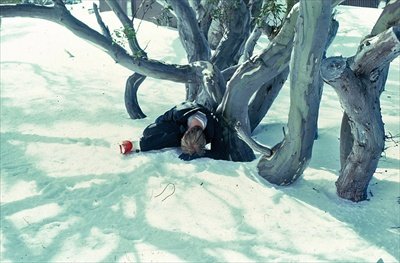
The incidence of head trauma is 3.8 per 100,000 ski visits, usually from direct collision with trees. The incidence of head trauma is higher for snow boarding, around 6.5 per 100,000 visits, more often caused by falling backwards. Most head traumas result in concussions, but 14% are severe head trauma, and 4% are fatal.
xx
Others
I came across this case report of another unusual neurologic skiing complication:
A 45-year old woman first developed distorted vision in the left eye, like looking through a kaleidoscope while skiing. Soon afterwards, her right leg started jerking, causing her to fall.
It turned out that she had sustained a left carotid artery dissection causing high grade stenosis during skiing.
There are a few other reports of cervical artery dissection from skiing.
